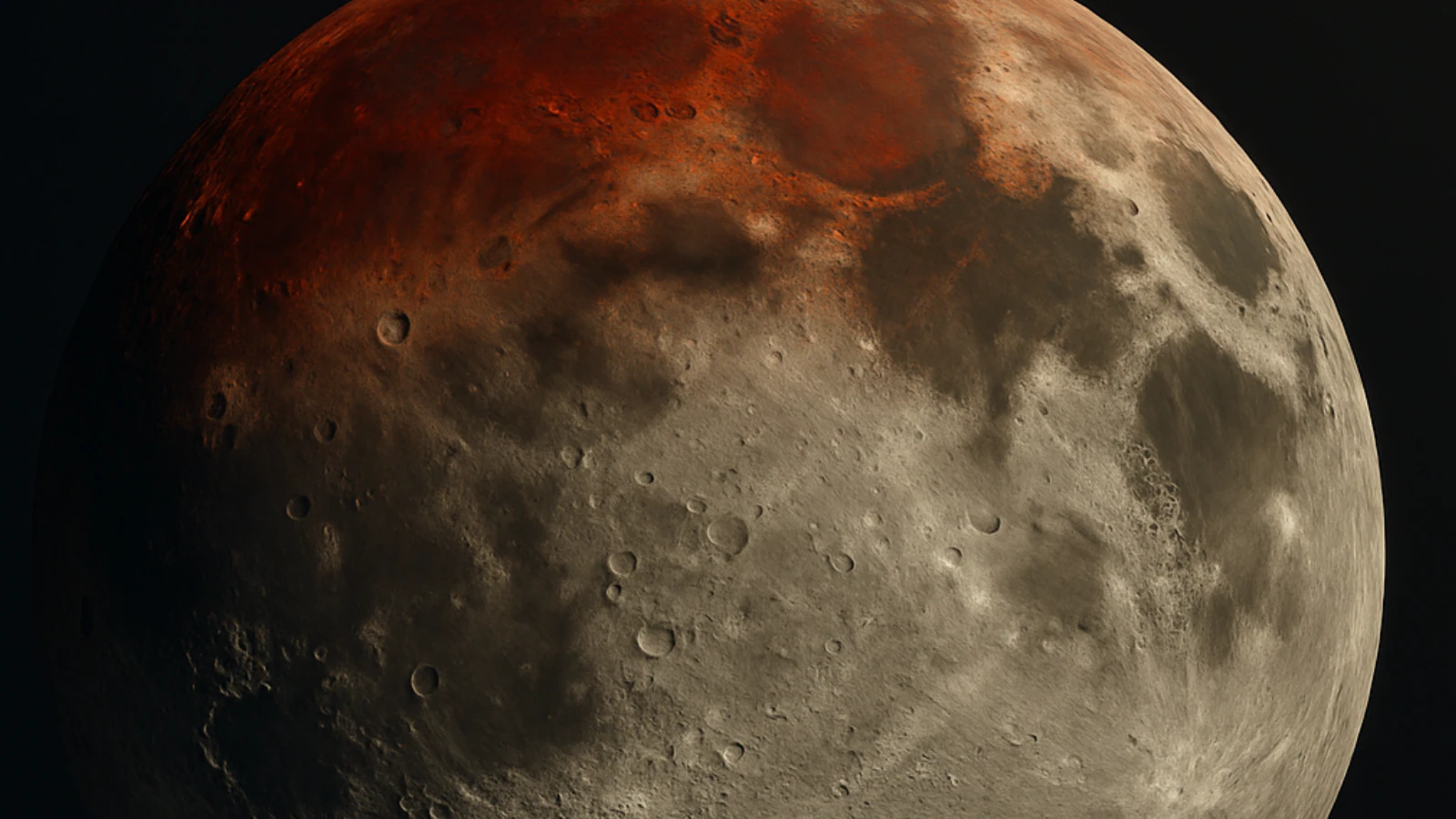By Mallika Soni,News18
Copyright news18

Researchers detected hematite- a form of iron oxide commonly known as rust- on the Moon’s surface, particularly at its poles, raising new questions about how the lunar body is changing. The findings, published in Geophysical Research Letters and reported by Nature, suggest that Earth may play a direct role in the phenomenon. Hematite formation typically requires both oxygen and water, resources scarce on the Moon.
“The findings help in understanding Earth’s deep link to the Moon,” said Ziliang Jin, a planetary scientist at Macau University of Science and Technology in China, who co-authored the study.
Why Is The Moon Rusting?
Scientists believe oxygen from Earth’s atmosphere is carried to the Moon during certain lunar phases. Each month, when Earth blocks solar winds for about five days as the Moon passes through the planet’s magnetotail, the lunar surface is exposed mainly to particles escaping Earth’s atmosphere- a phenomenon known as “Earth wind.” According to Sky At Night Magazine, this shielding effect reduces solar wind interference and allows oxidation to occur.
How Did Scientists Test The Theory?
To test the idea, researchers simulated Earth wind in a laboratory. They accelerated hydrogen and oxygen ions to high energies and directed them into iron-rich mineral crystals similar to those found on the Moon. The experiments showed that high-energy oxygen could turn these minerals into hematite, while hydrogen bombardment could partially reverse the process.
“This is a great experiment,” said Shuai Li, a planetary scientist at the University of Hawaii at Manoa, who led the 2020 team that first detected lunar hematite using data from India’s Chandrayaan-1 mission.
What Does This Mean For Future Moon Missions?
The presence of hematite has broad implications for upcoming lunar missions. Rusting on the Moon could affect how equipment and resources are developed for long-term stays.
“Our findings offer a practicable explanation for the formation and distribution of lunar hematite,” the researchers wrote, noting that the process indicates a long-term material exchange between Earth and the Moon.



